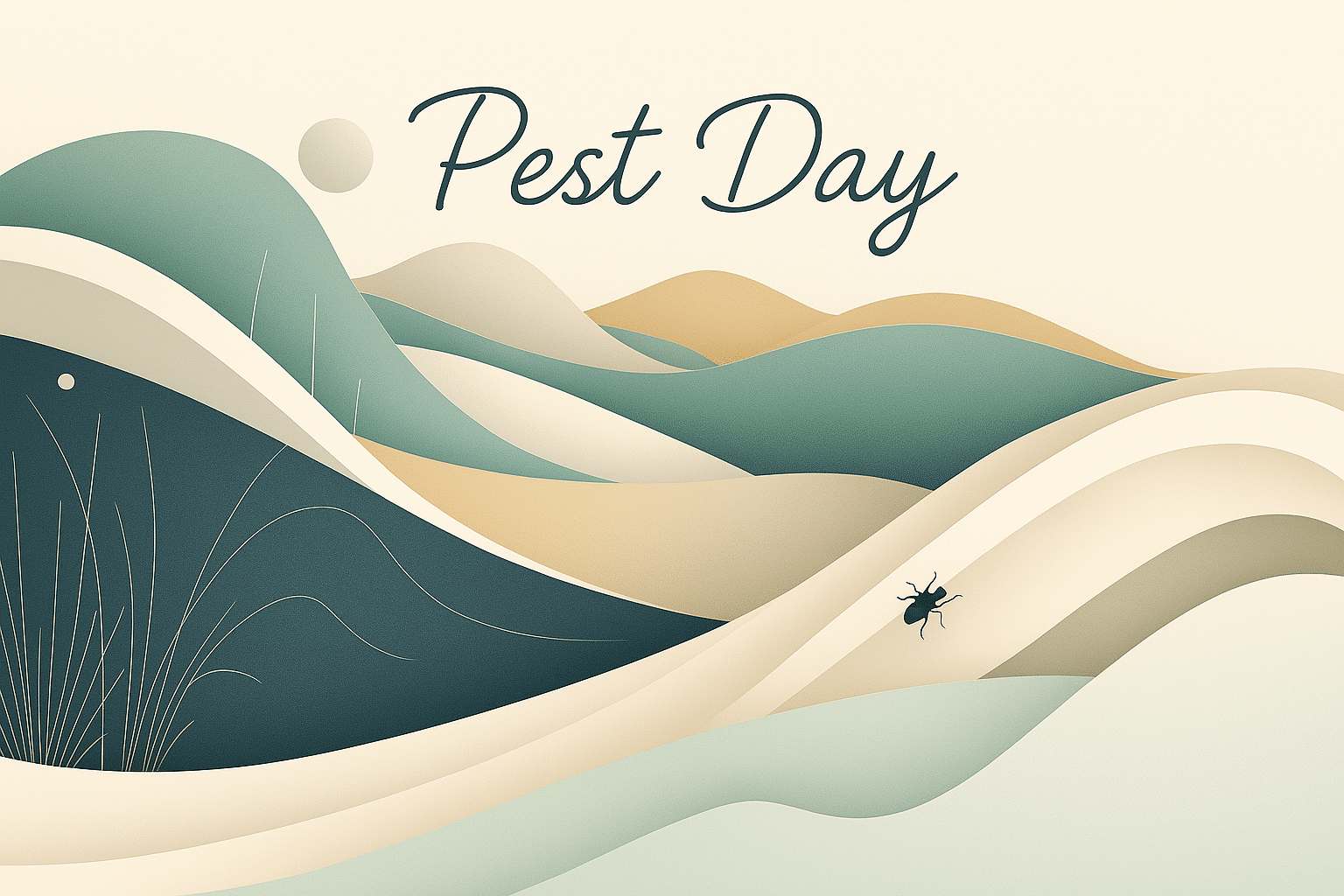What is World Pest Day?
World Pest Day is observed annually on June 6. This day is dedicated to raising awareness about the essential role of pest management in protecting public health, food security, property, and the environment. Pest control professionals, along with public health officials and communities, come together to promote sustainable pest management practices and educate the public on how to effectively deal with pest-related issues. World Pest Day emphasizes the importance of integrated pest management (IPM), which helps prevent pest problems in homes, businesses, and agricultural environments.
The celebration of World Pest Day also highlights the significance of pest control in reducing health risks associated with pests, such as disease transmission, allergies, and property damage. By focusing on professional pest management, the day aims to improve public understanding of the benefits of pest control and its role in maintaining a healthy, safe, and clean environment.
History and Origin
World Pest Day was established in 2017 by the Chinese Pest Control Association (CPCA) and the Federation of Asian and Oceania Pest Managers’ Associations (FAOPMA). The day was created to highlight the importance of pest control and raise global awareness about the challenges and solutions in pest management. Over the years, it has grown into an international observance, with pest control professionals and organizations worldwide coming together to share knowledge and promote effective pest management strategies.
The focus of World Pest Day is to encourage a collective effort in addressing pest-related problems, promoting environmental sustainability, and raising awareness of the health risks posed by pests. The day aligns with ongoing global efforts to reduce the spread of diseases transmitted by pests and safeguard ecosystems from the negative effects of invasive species.
Who participates in World Pest Day?
- Pest Control Professionals: These individuals lead the celebrations by engaging in educational campaigns, offering pest management services, and providing expert advice to the public.
- Public Health Officials: Healthcare professionals collaborate to spread awareness of the health risks associated with pests and help promote preventive measures.
- General Public: People from local communities participate in educational programs, online campaigns, and other activities to learn about pest prevention and control.
- Local Authorities: Government bodies may organize or support events that address pest control issues and share information on public health concerns related to pests.
- Environmental Organizations: Groups focused on sustainability often partner with pest control professionals to promote eco-friendly pest management methods.
Slogans and Themes
World Pest Day highlights the importance of sustainable pest management practices. Some common slogans and themes include “Global Solutions, Local Impact: Mapping Success in Pest Management” and “Together We Can Combat Pests.” These themes emphasize the global cooperation needed to tackle pest problems while ensuring environmental protection and public health.
Colors, Symbols, and Patterns
Colors
- Green: Represents environmental sustainability and eco-friendly pest control practices.
- Blue: Symbolizes trust and professionalism within the pest control industry.
- Yellow: Often associated with pest awareness, symbolizing caution and the need for proactive pest management.
Symbols
- Magnifying Glass: Represents the inspection and careful attention to detail needed in identifying and managing pest issues.
- Pest Control Tools: Icons such as sprayers or traps are frequently used to symbolize pest control efforts.
- Red Ribbon: While typically associated with other causes, the red ribbon can also symbolize awareness, particularly regarding public health concerns linked to pests.
Patterns
- Geometric Designs: These patterns are often used in promotional materials to convey precision and systematic approaches in pest control.
- Checkerboard: A traditional pattern used in campaigns to promote clarity and order in pest management.
- Circles: Represent unity and collaboration in global efforts to address pest-related challenges.
How do you celebrate World Pest Day?
- Educational Workshops: Attend or organize sessions to learn more about effective pest control methods and the importance of pest management in maintaining public health.
- Community Outreach: Participate in local events and campaigns aimed at educating the public about the risks of pests and how to prevent infestations.
- Media Campaigns: Share information on social media and other platforms to raise awareness about pest control solutions and environmental protection.
- Collaborative Initiatives: Join efforts with local authorities and environmental organizations to implement community-based pest control programs.
- Promotional Activities: Pest control businesses may offer special discounts or services to encourage homeowners and businesses to take proactive measures against pests.
Why is World Pest Day Important?
World Pest Day is important because it brings attention to the significant role that pest management plays in safeguarding public health, food security, and the environment. Pests can transmit diseases, cause allergies, and damage property, making effective pest control an essential service. This day promotes awareness of integrated pest management (IPM) as a sustainable, long-term solution to pest problems. It also encourages global cooperation and public participation in reducing the harmful impacts of pests.
By celebrating World Pest Day, we increase knowledge about pest-related risks, promote healthy environments, and ensure that pest management solutions are both effective and environmentally responsible.
Contact Info
June 6: Pest Day
Why do you keep falling for the same type?
Read the article Lovemaps: the hidden blueprint of our love.

